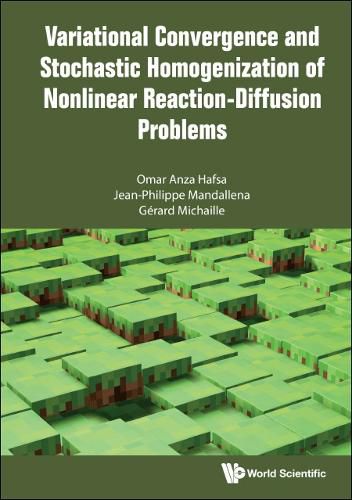Readings Newsletter
Become a Readings Member to make your shopping experience even easier.
Sign in or sign up for free!
You’re not far away from qualifying for FREE standard shipping within Australia
You’ve qualified for FREE standard shipping within Australia
The cart is loading…






This title is printed to order. This book may have been self-published. If so, we cannot guarantee the quality of the content. In the main most books will have gone through the editing process however some may not. We therefore suggest that you be aware of this before ordering this book. If in doubt check either the author or publisher’s details as we are unable to accept any returns unless they are faulty. Please contact us if you have any questions.
A substantial number of problems in physics, chemical physics, and biology, are modeled through reaction-diffusion equations to describe temperature distribution or chemical substance concentration. For problems arising from ecology, sociology, or population dynamics, they describe the density of some populations or species. In this book the state variable is a concentration, or a density according to the cases. The reaction function may be complex and include time delays terms that model various situations involving maturation periods, resource regeneration times, or incubation periods. The dynamics may occur in heterogeneous media and may depend upon a small or large parameter, as well as the reaction term. From a purely formal perspective, these parameters are indexed by n. Therefore, reaction-diffusion equations give rise to sequences of Cauchy problems.The first part of the book is devoted to the convergence of these sequences in a sense made precise in the book. The second part is dedicated to the specific case when the reaction-diffusion problems depend on a small parameter
intended to tend towards 0. This parameter accounts for the size of small spatial and randomly distributed heterogeneities. The convergence results obtained in the first part, with additionally some probabilistic tools, are applied to this specific situation. The limit problems are illustrated through biological invasion, food-limited or prey-predator models where the interplay between environment heterogeneities in the individual evolution of propagation species plays an essential role. They provide a description in terms of deterministic and homogeneous reaction-diffusion equations, for which numerical schemes are possible.
$9.00 standard shipping within Australia
FREE standard shipping within Australia for orders over $100.00
Express & International shipping calculated at checkout
This title is printed to order. This book may have been self-published. If so, we cannot guarantee the quality of the content. In the main most books will have gone through the editing process however some may not. We therefore suggest that you be aware of this before ordering this book. If in doubt check either the author or publisher’s details as we are unable to accept any returns unless they are faulty. Please contact us if you have any questions.
A substantial number of problems in physics, chemical physics, and biology, are modeled through reaction-diffusion equations to describe temperature distribution or chemical substance concentration. For problems arising from ecology, sociology, or population dynamics, they describe the density of some populations or species. In this book the state variable is a concentration, or a density according to the cases. The reaction function may be complex and include time delays terms that model various situations involving maturation periods, resource regeneration times, or incubation periods. The dynamics may occur in heterogeneous media and may depend upon a small or large parameter, as well as the reaction term. From a purely formal perspective, these parameters are indexed by n. Therefore, reaction-diffusion equations give rise to sequences of Cauchy problems.The first part of the book is devoted to the convergence of these sequences in a sense made precise in the book. The second part is dedicated to the specific case when the reaction-diffusion problems depend on a small parameter
intended to tend towards 0. This parameter accounts for the size of small spatial and randomly distributed heterogeneities. The convergence results obtained in the first part, with additionally some probabilistic tools, are applied to this specific situation. The limit problems are illustrated through biological invasion, food-limited or prey-predator models where the interplay between environment heterogeneities in the individual evolution of propagation species plays an essential role. They provide a description in terms of deterministic and homogeneous reaction-diffusion equations, for which numerical schemes are possible.